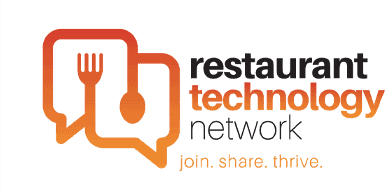One of the many major economic consequences of COVID-19 has been the accelerated adoption of a wide variety of contactless service models in the restaurant industry and beyond.
“Contactless” need not only refer to safety-enhancing measures, however. Here are three ways that contactless payment methods can actually result in increased sales for your restaurant.
Safety
First and foremost, in this time of COVID and quarantines, let’s talk about safety. The simple fact of the matter is that by eliminating the need to exchange physical payment methods (be they cash or card) contactless payments make the purchasing process safer for everyone involved.
One thing we’ve learned as a result of the COVID-19 dining room shutdowns is that people still want food from their favorite restaurants. Which restaurants they choose to order from, however, can be dependent upon who they feel safest doing business with.
By instituting completely contactless payment options (and making sure your customers know about them), you greatly increase the likelihood of customers choosing you over your competitors.
Convenience
Contactless payments were already growing in popularity before COVID for one simple reason: they’re convenient.
According to data from the 2020 Annual U.S. Debit Card Market Data Review:
- 51% of consumers are using Mastercard contactless (credit, debit, wallet)
- 33% of US consumers have switched their top-of-wallet card to contactless
- 45% of US consumers prefer to shop at stores that have contactless POS
- 56% of US consumers will continue using contactless post-Covid
- According to Visa, 31 million Americans tapped a Visa contactless card in March, up from 25 million in November
- Visa contactless usage has grown 150% since March 2019
Certainly, the primary driver of this increase in contactless payment methods at the moment is COVID, but the long-term reality is that consumers are now used to it. They’re going to expect it. And they’re going to be more likely to shop somewhere that offers that increased convenience going forward.
Friction
Finally, let’s examine the concept of “friction” when it comes to making a purchase decision. Friction, in this context, has to do with the perceived pain experienced by a consumer when spending money to obtain goods or services.
That “pain” is the result of experiencing the loss of money that the consumer has worked hard to earn, and it’s the catalyst behind the cognitive dissonance we often feel that may make us regret having made a particular purchase.
The amount of friction experienced varies greatly, however, based upon how the payment is made.
When using cash, you’re actually forced to watch tangible objects of value change hands, and that physical, visual experience can greatly affect how much you’re willing to spend. With credit cards, the friction is reduced. Yes, you must still hand over your card, but it’s just a piece of plastic. And you get it back! The money is still being spent, but you’re not forced to watch it go, and that can make it easier to spend more.
Now consider contactless payments. Just a wave of a card or mobile device, or better yet, just the tap of a screen is all it takes. Friction is practically nonexistent. And that means more money spent in your restaurant. Another drink? A decadent dessert? Sure! Just add it to the bill, and in a matter of seconds, it’s bought and paid for.
A study from Cardiff Metropolitan University says that, “The use of contactless payment was found to have a significant effect on spending habits of students. Common themes were apparent from the data analysis, such as a reduced sense of guilt; and a sub-conscious accumulation of small, impulsive purchases when using contactless payment. This was predominantly attributed to the notion that making a contactless transaction does not always feel like ‘real money,’ in the way that a cash payment does.”
Tech is Our Friend
Taking all this into account, it’s easy to see how modern payment solutions like those offered by OneDine can be a major contributor to increased safety and sales, both now and beyond. OneDine’s solutions allow guests to easily browse the menu, order, and pay right from their mobile device without having to wait for a server to visit them, and without having to exchange cards, pens, or receipts..
Not only is unnecessary contact eliminated and service streamlined, but guests can also receive customized recommendations by inputting their dietary preferences, favorite cuisines, dishes, spice levels, and more—all with no app required.
Learn more here.





